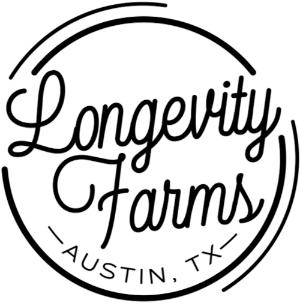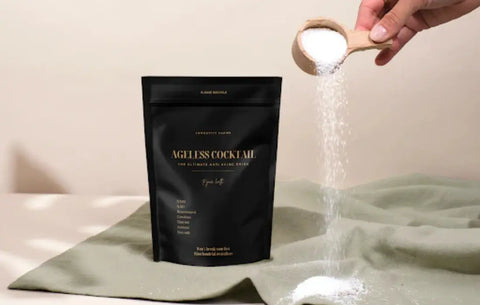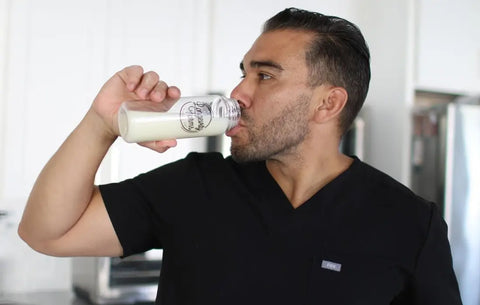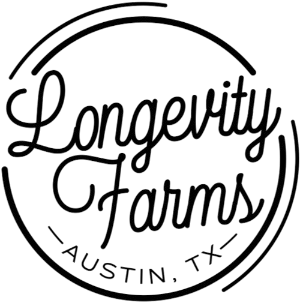Aging is fundamentally the result of cellular damage accumulating over time. We often notice wrinkles, persistent fatigue, or memory lapses as we age – these outward symptoms are actually signs of cellular damage accumulating beneath the surface. Fortunately, our bodies have built-in mechanisms for cellular repair, which constantly correct DNA errors and replace worn-out components to maintain healthy function. In recent years, two compounds have emerged as promising candidates for enhancing cellular health and longevity: resveratrol and NAD (nicotinamide adenine dinucleotide). In this article, we delve into the functions of each of these molecules, explore how they complement one another, and provide practical ways to harness their benefits for long-term wellness.
NAD+: The Lifeblood of Cellular Energy and Repair
NAD is a vital coenzyme found in every living cell, often described as the “fuel” for numerous biological processes. Chemically known as nicotinamide adenine dinucleotide, NAD exists in two forms (NAD<sup>+</sup> and NADH) that participate in redox reactions, transferring electrons to help convert nutrients into cellular energy (ATP). In simpler terms, NAD+ is like a cellular battery charger that keeps our metabolism running. However, its importance goes far beyond metabolism. NAD+ also serves as a crucial cofactor for proteins that repair damaged DNA and regulate gene expression, including sirtuins and PARP enzymes. As a result, maintaining sufficient NAD levels is crucial for genomic stability and stress resistance. When NAD is depleted, cells struggle to carry out basic maintenance – low NAD can limit energy production, DNA repair efficiency, and even proper cell signaling. NAD+ levels naturally decline with age (with middle-aged adults having a fraction of the NAD+ they had in youth), which is thought to contribute to fatigue, slower healing, and other age-related issues.

What are the Benefits of NAD?
Given NAD’s central role in cell biology, it’s no surprise that bolstering NAD has wide-ranging positive effects. Some key NAD benefits include more efficient energy metabolism (since NAD is needed to derive energy from food), enhanced activation of longevity pathways (through sirtuin enzymes), and improved cellular defense against oxidative stress. For example, high NAD+ availability helps cells promptly fix DNA breaks and recover from oxidative damage, thereby supporting healthier aging. These benefits translate into tangible outcomes: better endurance and muscle function, improved cognitive clarity, and resilience against metabolic disorders, as noted in emerging research.
NAD Depletion and Supplementation
Various factors drain our NAD reserves over time. By age 50 or 60, many individuals have dramatically lower NAD+ levels than in their twenties, which may accelerate aspects of aging. This has led scientists and health enthusiasts to explore NAD supplement strategies to restore cellular NAD. Directly consuming NAD+ is ineffective (it’s not readily absorbed intact), so the focus is on NAD precursors: compounds that the body can readily convert into NAD. Two popular examples are NMN (nicotinamide mononucleotide) and NR (nicotinamide riboside), both forms of vitamin B3 that have been shown to raise NAD+ levels in cells. Taking NAD supplements as a precursor can effectively recharge NAD stores and has gained a reputation as a promising anti-aging intervention. Some individuals even buy high-dose NMN supplement products to maximize this effect, aiming to mimic the NAD levels of youth.
Resveratrol: A Natural Longevity Compound
Resveratrol is a plant-derived polyphenol that first gained attention as a possible explanation for the “French Paradox” – the observation that French populations had relatively low rates of heart disease despite diets rich in saturated fats.
Foods High in Resveratrol Content
A balanced diet rich in plant-based foods offers a natural way to introduce resveratrol into your system and support cellular health. While the quantities from food sources are modest compared to supplements, making intentional dietary choices can provide a foundation for cellular resilience, antioxidant defense, and overall wellness. Below are key foods that contain resveratrol:
-
Red Grapes and Red Wine: The skin of red grapes is one of the richest natural sources of resveratrol, which is why red wine contains this beneficial compound. Eating whole red grapes or drinking moderate amounts of red wine can increase your intake, though concentrations in wine vary greatly depending on grape variety and processing. The resveratrol found in grapes is accompanied by other polyphenols and antioxidants, which support cellular repair and help reduce oxidative stress. For those who avoid alcohol, consuming fresh grapes is an excellent alternative for a daily boost of natural resveratrol.
-
Peanuts and Certain Nuts: Peanuts are one of the few nuts that naturally contain resveratrol, albeit in lower amounts than grapes. Including peanuts or natural peanut butter in your diet can contribute to your overall polyphenol intake. Peanuts also offer healthy fats, protein, and other micronutrients that work in concert to support cellular function and energy metabolism. Other nuts, such as pistachios, contain trace amounts of resveratrol and can be included as part of a varied, nut-rich diet for additional benefits.
-
Berries (Blueberries, Cranberries, and More): Several berries, including blueberries and cranberries, provide small amounts of resveratrol along with a potent mix of vitamins, minerals, and other antioxidants. Regular consumption of these berries helps protect cells from oxidative damage and inflammation, both of which are key contributors to cellular aging. The combination of resveratrol and other phytonutrients in berries offers a synergistic effect that supports cellular repair and resilience.
-
Japanese Knotweed (Polygonum cuspidatum): While it is not a staple food in most diets, some traditional cuisines use knotweed in cooked dishes. Its high resveratrol content makes it a valuable plant for those seeking to maximize polyphenol intake through natural means. However, due to its rarity in typical diets, most people benefit from focusing on more common sources like grapes, nuts, and berries.
These foods not only deliver resveratrol but also provide a range of nutrients that work together to combat oxidative stress, support DNA repair, and promote long-term health and vitality. Making mindful dietary choices is a practical first step in harnessing the cellular benefits of resveratrol.
Key Resveratrol Benefits and Actions
Resveratrol gained fame for its potential anti-aging effects, and scientists have uncovered multiple mechanisms behind its protective influence. Foremost, resveratrol is known to activate sirtuin genes (especially SIRT1), which are often dubbed “longevity genes” because they improve DNA stability and cellular health. By turning on SIRT1, resveratrol effectively mimics some benefits of calorie restriction (a known lifespan-extending intervention) at the cellular level. Additionally, resveratrol possesses potent antioxidant properties, helping to neutralize free radicals and reactive oxygen species that can otherwise damage DNA, proteins, and cell membranes. It also has anti-inflammatory effects, reducing the secretion of inflammatory molecules that contribute to the progression of aging and chronic diseases. Beyond these, resveratrol promotes mitochondrial health by encouraging the growth of new mitochondria (the energy factories of cells) and optimizing their function. The net result is a broad spectrum of resveratrol benefits observed in studies, including increased mitochondrial content and antioxidant capacity in cells, reduced inflammation, improved metabolic function, and enhanced vascular health. In animal models, high-dose resveratrol has been shown to extend the lifespan of mice on a high-fat diet, while also improving their insulin sensitivity and endurance. In humans, resveratrol has shown promise for supporting heart and brain health.

The Role of Sirtuins in Cellular Health
To understand why NAD+ and resveratrol are such a dynamic duo, we need to introduce the sirtuins. Sirtuins are a family of enzymes (SIRT1 through SIRT7 in humans) that depend on NAD+ to function and regulate a host of vital processes. Often referred to as the “guardians of the genome,” sirtuins coordinate DNA repair, gene expression, metabolism, and cell survival in response to stress.
SIRT1 and SIRT6 are directly involved in repairing broken DNA strands and maintaining telomeres, slowing cellular aging. NAD and sirtuins are inseparable partners: sirtuin enzymes utilize NAD+ molecules as a source of energy for their activity. Without NAD+, sirtuins become inactive, and their benefits are lost. This is where resveratrol comes in – resveratrol is one of the best-known sirtuin-activating compounds (sometimes abbreviated STAC). By binding to SIRT1, resveratrol essentially flips the “on” switch, increasing SIRT1’s activity. But if there isn’t enough NAD+ present, even an activated SIRT1 can’t do its job.
Synergy of NAD+ and Resveratrol: An “Ageless Cocktail”
Individually, NAD+ and resveratrol each confer significant benefits to cells, but together their impact appears to be even greater. When used in combination, we get a powerful one-two punch for cellular rejuvenation. Resveratrol and NAD for longevity is a concept backed by growing scientific evidence. The synergy largely centers around the sirtuin enzymes discussed above. Think of SIRT1 (a key longevity protein) as an engine in your cells: resveratrol is like turning the ignition key to start that engine, while NAD+ is the fuel that keeps it running at high performance. In the presence of both molecules, sirtuins like SIRT1 can work at full capacity, unleashing processes that enhance cell survival and repair. According to research on nutritional biochemistry, increasing NAD+ through precursors (such as NMN or NR) provides the raw materials sirtuins need, whereas resveratrol provides the activation or boost to their activity. This complementary action means the combined effect is multiplicative rather than merely additive – cells see greater benefits in energy production, stress resistance, and DNA maintenance than they would from either compound alone.
NAD+, Resveratrol, and DNA Repair Mechanisms
One of the most critical aspects of cellular repair is the constant maintenance of our DNA. Every day, our DNA is under assault from UV radiation, environmental toxins, and normal metabolic byproducts. If these DNA lesions are not fixed, they can lead to mutations, malfunctioning cells, or cell death. Our cells rely on dedicated DNA repair enzymes to find and fix breaks or errors in the DNA strand. Here is where NAD+ and resveratrol again play starring roles. To appreciate how NAD helps with DNA repair, consider the family of enzymes known as PARPs (poly ADP-ribose polymerases). PARP enzymes detect DNA strand breaks and initiate repair by signaling and recruiting other repair proteins. However, every time a PARP enzyme fixes a DNA break, it uses up an NAD+ molecule as a substrate to form ADP-ribose chains – in essence, NAD+ is the direct fuel for PARP-mediated DNA repair. If NAD+ levels are low, PARP activity can dwindle, and repair processes slow down or stall. This is one reason why NAD+ depletion with age is linked to genomic instability: the repair crews lack an adequate energy supply to perform efficient work.
Resveratrol also enters the picture by indirectly aiding DNA repair. As mentioned, resveratrol activates sirtuins like SIRT1 and SIRT6, which aid in DNA damage repair and the maintenance of telomeres (the protective end caps of chromosomes). Activated sirtuins can improve the cell’s ability to respond to DNA damage and promote the expression of other repair genes. Also, resveratrol’s antioxidant properties mean there is less oxidative damage to DNA in the first place – it helps prevent some of the “fire” that the repair enzymes would otherwise have to fight. Third, resveratrol has been noted to enhance the expression of factors like Nrf2, a protein that controls the production of our own antioxidant and detoxification enzymes, thereby shielding DNA from specific chemical stresses. By both reducing damage and enhancing the repair response, resveratrol provides a supportive environment for DNA maintenance.
The combined effect is a comprehensive defense of the genome. NAD+ ensures that repair enzymes (PARPs and sirtuins alike) have the necessary fuel to operate. Resveratrol ensures that those enzymes are activated and that the cell is under less attack from free radicals and inflammation while repairs are underway. Over time, this could mean fewer mutations and a lower risk of the diseases associated with DNA damage. When discussing natural supplements for cellular repair, NAD boosters and resveratrol are prime examples of agents that work at the level of DNA restoration and protection.
Practical Ways to Support Cellular Repair
Understanding the science is one thing, but how can one put NAD+ and resveratrol to use in everyday life to promote cellular repair? There are several practical approaches to consider:
-
Supplementation: To truly harness the benefits of these molecules, many people turn to supplements. High-quality resveratrol supplement products (often containing trans-resveratrol) are widely available. It’s advisable to choose one that is pure and possibly combined with piperine (black pepper extract) to improve absorption. Consumers often buy resveratrol online or in health stores as capsules or powders. When you buy pure resveratrol online, verify that the vendor provides third-party testing for potency and purity. On the NAD side, supplements are available in the form of NAD precursors, such as NMN or NR, as discussed earlier. Taking an NMN capsule daily can help steadily increase your NAD+ levels over time.
-
Combinatorial products: An emerging trend is the development of all-in-one longevity formulations that pair multiple synergistic ingredients. One example is Longevity Farms’ Ageless Cocktail, a drinkable supplement blend that includes NMN (to boost NAD) and resveratrol among its mix of seven longevity nutrients. Such products aim to simplify the regimen by providing a science-backed combination in clinically effective doses. Rather than juggling separate pills, a formula like the Ageless Cocktail delivers a convenient natural supplement for cellular repair support, essentially giving cells a daily dose of both NAD precursors and activators in one go.
-
Monitor and adjust: Finally, supporting cellular repair is not a one-time effort but a continuous lifestyle choice. Some advanced users get their NAD+ levels measured to measure their baseline and track improvements after supplementation. Others pay attention to indirect signals – better workout recovery, clearer skin, improved focus – as signs that their cellular health might be improving.
Additives, Allergens, and Ingredient Transparency
When choosing a resveratrol supplement to support cellular repair, it’s crucial to look beyond the headline ingredient and examine the product’s whole composition. High-quality resveratrol supplements should be formulated with purity and safety in mind, minimizing unnecessary additives and avoiding common allergens that could undermine their health benefits. One of the first things to check is the ingredient list for artificial coloring or flavoring, which serves no therapeutic purpose and may cause adverse reactions in sensitive individuals. Similarly, reputable products will be free from preservatives and fillers that can dilute the potency of the active compound. For individuals with dietary restrictions or allergies, it’s essential to choose supplements that indicate the absence of gluten, dairy, wheat, soy, corn, yeast, salt, and sugar. These ingredients are sometimes used as binders or bulking agents, but their inclusion can pose risks for people with allergies, intolerances, or specific dietary preferences such as veganism or celiac disease.

Ingredient transparency is another key marker of a trustworthy resveratrol supplement. The best manufacturers provide detailed information about the source and form of resveratrol used, most notably, whether the product contains pure trans-resveratrol, which is the biologically active form most studied for its health benefits. Some supplements may combine resveratrol with other synergistic compounds, such as rutin (a bioflavonoid that can enhance antioxidant effects), to broaden the supplement’s protective properties. While these combinations can be advantageous, all additional ingredients must be clearly disclosed and justified by evidence of benefit, rather than being included as unnecessary extras. Purity standards go hand-in-hand with transparency. A high-quality resveratrol supplement will not only highlight what it contains but also what it deliberately omits. Labels should explicitly state that the product is free from artificial additives, animal-derived ingredients (to ensure suitability for vegetarians and vegans), and common allergens.
The interplay of NAD+ and resveratrol is a testament to how modern science is unraveling the secrets of longevity. By targeting fundamental processes of cellular repair and maintenance, these two compounds address aging at its root – the cell. NAD+ replenishment provides cells with the energy and resources necessary to carry out critical repairs, while resveratrol activates the pathways that initiate these repairs and shields cells from further harm. They act in concert, much like recharging a battery and upgrading its efficiency simultaneously.
Sources
-
Massudi H. et al. (2012). Age-Associated Changes In Oxidative Stress and NAD+ Metabolism In Human Tissue. PLOS One, 7(7): e42357. DOI: 10.1371/journal.pone.0042357. (Findings indicate NAD+ depletion with age may limit energy production and DNA repair)
-
Wilk A. et al. (2020). Extracellular NAD+ enhances PARP-dependent DNA repair capacity independently of CD73 activity. Scientific Reports, 10: 651. (NAD+ is shown to be a required substrate for PARP enzymes and sirtuins involved in DNA repair)
-
Ghosh S. (2022). Enhancing Longevity-Promoting Cocktails: Combining Micronutrients with NAD+ Precursors to Maximize Their Effects. NAD.com News. (Discusses the synergy of NAD+ precursors with compounds like resveratrol for anti-aging benefits)
-
Wan X. et al. (2021). Sirtuin Control of Mitochondrial Dysfunction, Oxidative Stress, and Inflammation in Chagas Disease Models. Frontiers in Cell. & Infection Microbiology, 11: 693051. (Notes that resveratrol increases mitochondrial content, antioxidant capacity, and improves metabolic and vascular function in studies)




